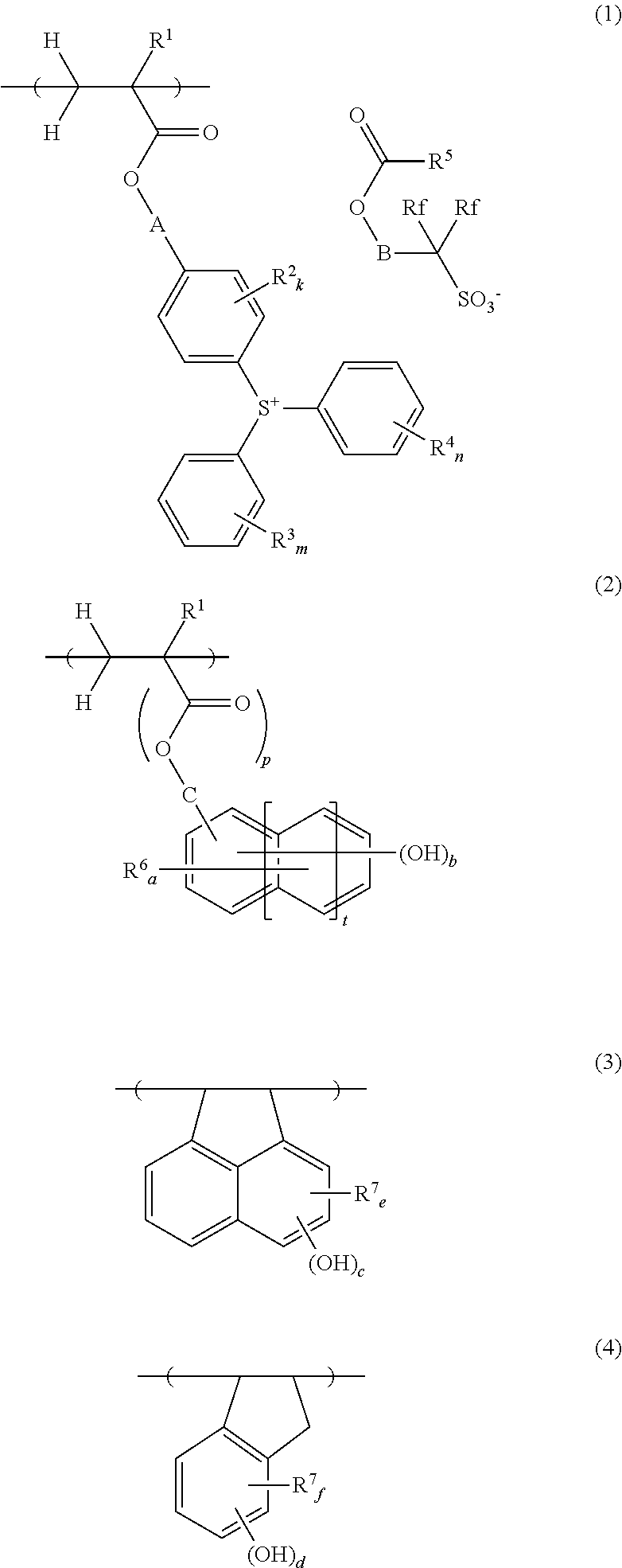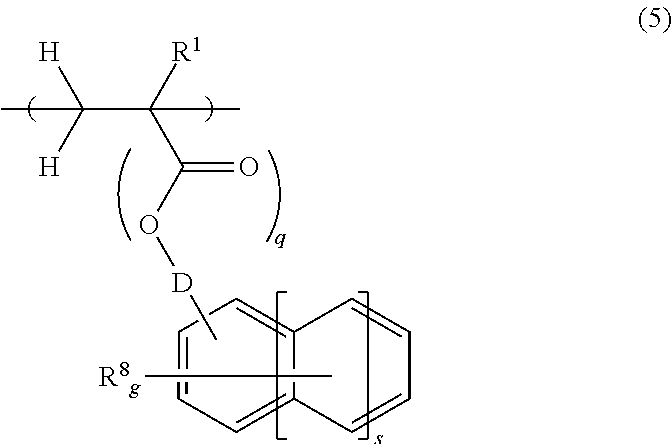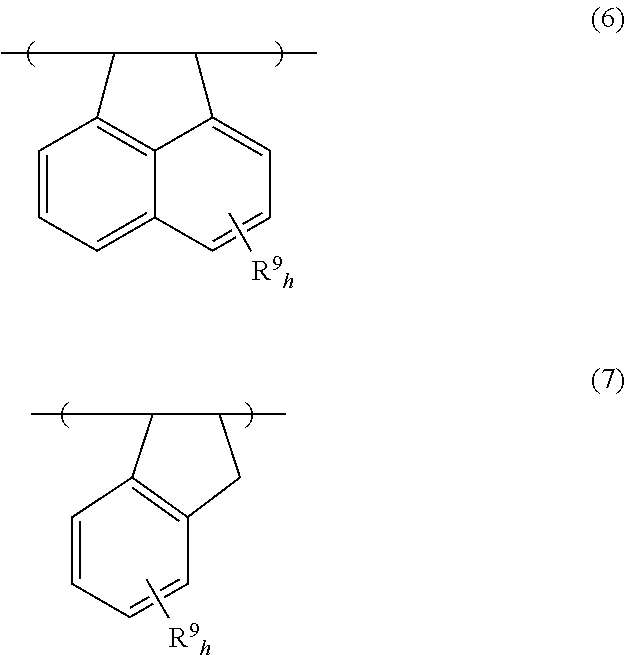Chemically amplified negative resist composition and patterning process
a negative resist and composition technology, applied in the direction of photosensitive materials, instruments, photomechanical equipment, etc., can solve the problem that the technique of incorporating an acid generator into a polymer is not affirmatively applied to the composition of negative resist, and achieves the effect of effective sensitivity, suppressing acid deactivation, and uniform distribution and diffusion
- Summary
- Abstract
- Description
- Claims
- Application Information
AI Technical Summary
Benefits of technology
Problems solved by technology
Method used
Image
Examples
polymer synthesis example 1
[0142]In a 200-mL dropping funnel under nitrogen blanket, a solution was prepared by dissolving 57.69 g of 4-(1-ethoxyethoxy)styrene, 6.21 g of acenaphthylene, 6.51 g of 4-methylstyrene, 9.59 g of a monomer Z-1 of the structure shown below, and 7.52 g of dimethyl 2,2′-azobis(2-methylpropionate) (V601, Wako Pure Chemical Industries, Ltd.) in 90 g of methyl ethyl ketone (MEK) as a solvent. A 500-mL polymerization flask was purged with nitrogen, charged with 59 g of MEK, and heated at 80° C., after which the solution was added dropwise to the flask over 4 hours. After the completion of dropwise addition, stirring was continued for 18 hours while maintaining the polymerization temperature of 80° C. The polymerization solution was then cooled down to room temperature, combined with 60 g of methanol and 1.6 g of oxalic acid dihydrate, and stirred for 4 hours at 50° C. The solution was cooled down to room temperature and then neutralized by adding 2.1 g of triethylamine. The reaction solut...
polymer synthesis example 2
[0144]In a 200-mL dropping funnel under nitrogen blanket, a solution was prepared by dissolving 54.18 g of 4-(1-ethoxyethoxy)styrene, 4.7 g of acenaphthylene, 2.47 g of 4-methylstyrene, 9.07 g of monomer Z-1 of the above structure, 8.41 g of a monomer Y-1 of the structure shown below, and 6.93 g of dimethyl 2,2′-azobis(2-methylpropionate) (V601, Wako Pure Chemical Industries, Ltd.) in 90 g of methyl ethyl ketone (MEK) as a solvent. A 500-mL polymerization flask was purged with nitrogen, charged with 59 g of MEK, and heated at 80° C., after which the solution was added dropwise to the flask over 4 hours. After the completion of dropwise addition, stirring was continued for 18 hours while maintaining the polymerization temperature of 80° C. The polymerization solution was then cooled down to room temperature, combined with 60 g of methanol and 1.6 g of oxalic acid dihydrate, and stirred for 4 hours at 50° C. The solution was cooled down to room temperature and then neutralized by addi...
polymer synthesis example 6
[0146]In a 200-mL dropping funnel under nitrogen blanket, a solution was prepared by dissolving 54.15 g of 4-hydroquinone monomethacrylate, 7.94 g of acenaphthylene, 7.7 g of 4-methylstyrene, 10.2 g of monomer Z-1 of the above structure, and 8.0 g of dimethyl 2,2′-azobis(2-methylpropionate) (V601, Wako Pure Chemical Industries, Ltd.) in 90 g of methyl ethyl ketone (MEK) as a solvent. A 300-mL polymerization flask was purged with nitrogen, charged with 59 g of MEK, and heated at 80° C., after which the solution was added dropwise to the flask over 4 hours. After the completion of dropwise addition, stirring was continued for 4 hours while maintaining the polymerization temperature of 80° C. Thereafter, the polymerization solution was cooled down to room temperature, and added dropwise to 1,300 g of hexane whereupon a copolymer precipitated. The copolymer precipitate was collected by filtration, washed twice with 300 g of hexane, and dissolved in 140 g of MEK. The MEK solution was pas...
PUM
| Property | Measurement | Unit |
|---|---|---|
| size | aaaaa | aaaaa |
| wavelength | aaaaa | aaaaa |
| mol % | aaaaa | aaaaa |
Abstract
Description
Claims
Application Information
 Login to View More
Login to View More - R&D
- Intellectual Property
- Life Sciences
- Materials
- Tech Scout
- Unparalleled Data Quality
- Higher Quality Content
- 60% Fewer Hallucinations
Browse by: Latest US Patents, China's latest patents, Technical Efficacy Thesaurus, Application Domain, Technology Topic, Popular Technical Reports.
© 2025 PatSnap. All rights reserved.Legal|Privacy policy|Modern Slavery Act Transparency Statement|Sitemap|About US| Contact US: help@patsnap.com



